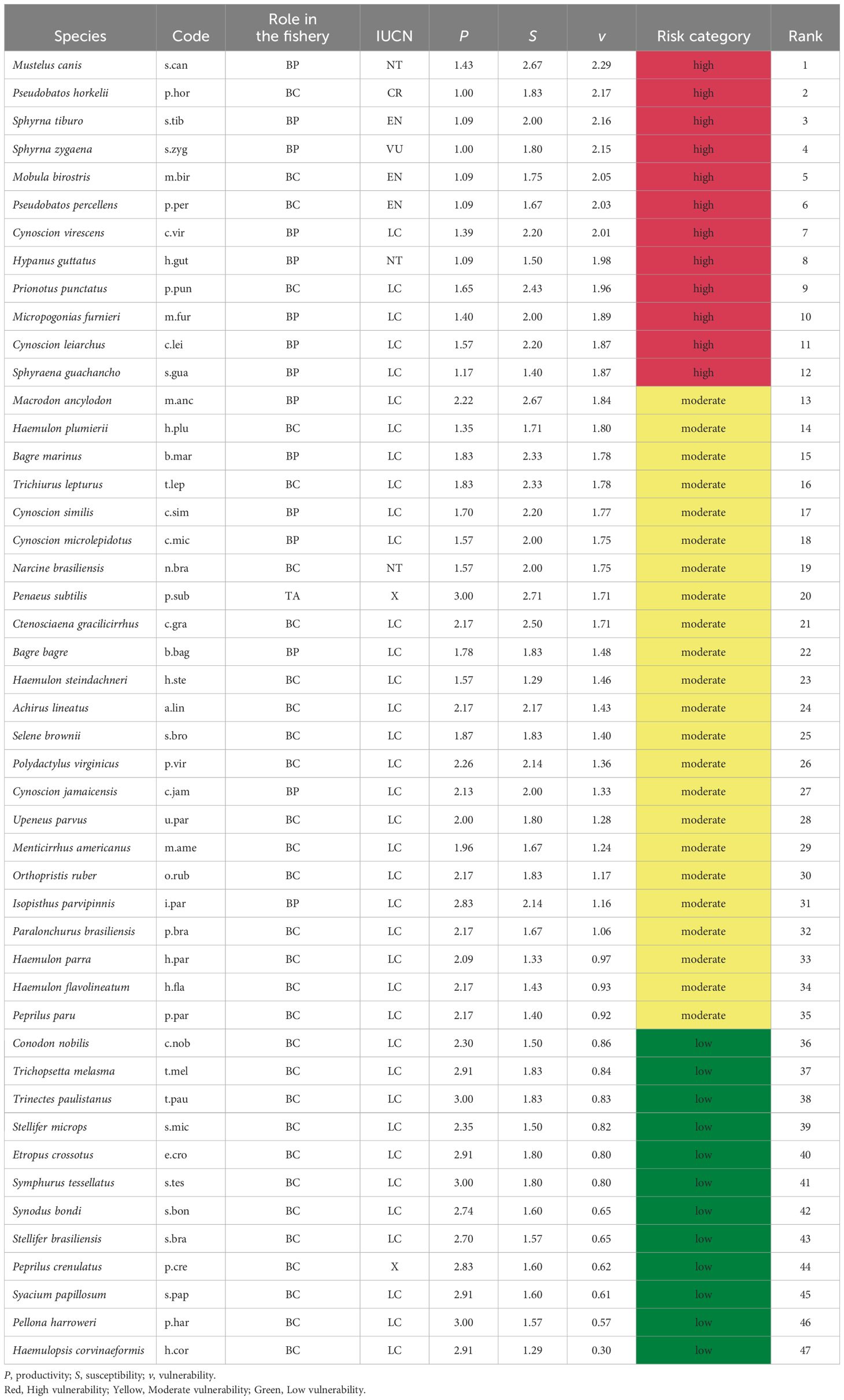Experts issue urgent PSA to boat owners as devastating species takes over major water bodies: ‘A … red flag’ – The Cool Down

Report on the Proliferation of Invasive Starry Stonewort in Indiana’s Waterways and its Conflict with Sustainable Development Goals
Introduction: An Emerging Environmental Challenge
An invasive alga, starry stonewort (Nitellopsis obtusa), has established a significant presence in the lakes and rivers of Indiana. Originating from Eurasia and introduced to North America via ship ballast water, the species is now spreading rapidly, primarily through attachment to recreational watercraft. This infestation poses a considerable threat to local ecosystems and human activities, directly undermining progress toward several United Nations Sustainable Development Goals (SDGs).
Ecological Impact and SDG Implications
The unchecked growth of starry stonewort creates dense, bottom-to-surface mats that fundamentally alter the aquatic environment. These alterations represent a direct challenge to the conservation and sustainable use of freshwater ecosystems.
- SDG 14: Life Below Water: The primary impact is on aquatic biodiversity. The invasive algae outcompete and displace native plant species, which are crucial for a healthy ecosystem. Furthermore, it degrades critical habitats for fish, including nesting grounds, thereby threatening local fish populations and the overall ecological balance. This directly contravenes Target 14.2, which calls for the protection and restoration of marine and coastal ecosystems.
- SDG 15: Life on Land: Freshwater ecosystems are intrinsically linked to terrestrial ones. The disruption of the aquatic food web and the reduction in biodiversity weaken the resilience of the entire local ecosystem, a core concern of SDG 15, which aims to halt biodiversity loss.
- SDG 11: Sustainable Cities and Communities: The infestation compromises recreational access for boating and beach use, diminishing the cultural and natural heritage that local communities depend on for well-being and economic activity.
Causative Factors and Links to Unsustainable Practices
The proliferation of starry stonewort is exacerbated by specific human activities and pollutants, highlighting a need for more sustainable practices on land and water.
- Nutrient Pollution: Elevated levels of phosphorus in the water, resulting from agricultural runoff and residential fertilizer use, act as a catalyst for the rapid growth of the algae. This points to a failure in managing water quality, a key component of SDG 6: Clean Water and Sanitation (Target 6.3: improve water quality by reducing pollution).
- Inadequate Production Patterns: The agricultural runoff issue is directly linked to SDG 12: Responsible Consumption and Production, underscoring the need for more sustainable agricultural practices that minimize environmental externalities.
- Human-aided Transport: The primary vector for spread between water bodies is contaminated boats, trailers, and other equipment, indicating a gap in public awareness and preventative protocols.
Mitigation Strategies and Alignment with SDG Framework
Addressing the starry stonewort invasion requires a multi-faceted approach involving costly remediation and, more importantly, preventative measures that align with sustainable development principles.
Current Remediation Efforts
Direct treatment is both expensive and challenging. Chemical applications cost approximately $500 per acre and must be repeated frequently, with the total cost for a single lake potentially reaching $60,000. Some lake associations are installing retention ponds to capture sediment and phosphorus, a direct action supporting SDG 6.
Recommended Preventative Actions
Preventing further spread is the most effective long-term strategy. Public cooperation is essential for protecting water bodies and achieving conservation goals. The following actions are strongly encouraged for all water users:
- Clean: Thoroughly clean all visible plant fragments, mud, and debris from boats, trailers, and all aquatic equipment before leaving a water access point.
- Drain: Drain all water from motors, live wells, bilges, and bait buckets before leaving the area.
- Dry: Allow boats and equipment to dry completely for at least five days before transporting them to another body of water.
- Dispose: Properly dispose of unwanted bait and aquarium contents in the trash, never in a natural water body.
These preventative measures represent a practical application of stewardship principles central to SDG 14 and SDG 15, empowering individuals to contribute directly to the protection of biodiversity and the health of aquatic ecosystems.
Analysis of Sustainable Development Goals (SDGs) in the Article
1. Which SDGs are addressed or connected to the issues highlighted in the article?
- SDG 6: Clean Water and Sanitation – The article discusses the degradation of water quality in lakes and rivers due to pollution from agricultural runoff and fertilizers, which encourages the growth of invasive algae.
- SDG 14: Life Below Water – The core issue is the impact of an invasive species on aquatic ecosystems. The article details how starry stonewort affects native plants, fish habitats, and the overall health of lake and river ecosystems. Although SDG 14 primarily focuses on marine environments, its principles regarding pollution and ecosystem protection are directly applicable to the large freshwater bodies discussed.
- SDG 15: Life on Land – This goal is relevant as it includes the protection of biodiversity and ecosystems, specifically addressing the problem of invasive alien species. The article highlights the threat starry stonewort poses to native species and biodiversity in freshwater ecosystems.
2. What specific targets under those SDGs can be identified based on the article’s content?
-
SDG 6: Clean Water and Sanitation
- Target 6.3: “By 2030, improve water quality by reducing pollution, eliminating dumping and minimizing release of hazardous chemicals and materials…” The article directly links the algae’s growth to “high levels of phosphorus in the water caused by agricultural runoff, fallen leaves, and fertilizer from nearby homes.” It also mentions advice to “refrain from dumping bait or aquariums in the water.”
- Target 6.6: “By 2020, protect and restore water-related ecosystems, including… rivers… and lakes.” The entire article is about the degradation of lake and river ecosystems by an invasive species and the difficult, expensive efforts required for restoration.
-
SDG 14: Life Below Water
- Target 14.1: “By 2025, prevent and significantly reduce marine pollution of all kinds, in particular from land-based activities, including… nutrient pollution.” The article identifies phosphorus from agricultural runoff and residential fertilizers as a key driver of the algae infestation, which is a form of nutrient pollution impacting aquatic life.
- Target 14.2: “By 2020, sustainably manage and protect marine and coastal ecosystems to avoid significant adverse impacts… and take action for their restoration…” The article describes how the algae “changes the environment of a lake,” compromises access, and requires costly restoration efforts (“Eradicating a single lake can cost up to $60,000”).
-
SDG 15: Life on Land
- Target 15.5: “Take urgent and significant action to reduce the degradation of natural habitats, halt the loss of biodiversity and, by 2020, protect and prevent the extinction of threatened species.” The article states that the algae pushes out native plants and fauna, disrupts the natural balance, weakens biodiversity, and can “prevent fish from accessing habitats where they nest, possibly threatening the success of the species.”
- Target 15.8: “By 2020, introduce measures to prevent the introduction and significantly reduce the impact of invasive alien species on land and water ecosystems and control or eradicate the priority species.” The article is centered on the invasive alga starry stonewort, its introduction via ship ballasts and boats, its impact, and the measures being taken to control its spread (e.g., cleaning boats, chemical treatments).
3. Are there any indicators mentioned or implied in the article that can be used to measure progress towards the identified targets?
- Concentration of phosphorus in water: The article states that “High levels of phosphorus in the water” encourage algae growth. Measuring phosphorus levels would be a direct indicator of progress towards reducing nutrient pollution (Target 14.1 and 6.3).
- Prevalence and spread of invasive species: The article focuses on starry stonewort infesting “many lakes and rivers.” An indicator would be the number of infested water bodies or the acreage covered by the algae. Tracking new infestations, especially “off of a boat ramp or marina,” would measure the effectiveness of prevention measures (Target 15.8).
- Reduction in native plant populations: The article notes, “In every lake where it exists, there has been a reduction in native plants.” An indicator of ecosystem health would be the ratio of native to invasive plant species or the overall population count of key native aquatic plants (Target 15.5).
- Fish population and nesting success: The article mentions that the algae “can prevent fish from accessing habitats where they nest.” Monitoring fish populations and their reproductive success would serve as an indicator of the ecosystem’s health and the impact of the invasive species (Target 15.5).
- Cost of remediation: The article quantifies the cost of control efforts (“$500 per acre” and up to “$60,000” per lake). This financial figure can be used as an indicator of the economic burden of the invasive species and the scale of the problem (Targets 14.2 and 15.8).
4. Table of SDGs, Targets, and Indicators
| SDGs | Targets | Indicators |
|---|---|---|
| SDG 6: Clean Water and Sanitation | 6.3: Improve water quality by reducing pollution.
6.6: Protect and restore water-related ecosystems. |
– Concentration of phosphorus in water bodies. – Number of lakes and rivers requiring restoration efforts. |
| SDG 14: Life Below Water | 14.1: Prevent and reduce nutrient pollution from land-based activities.
14.2: Sustainably manage and protect aquatic ecosystems and take action for their restoration. |
– Levels of nutrient pollution (phosphorus) from agricultural and residential runoff. – Cost of remediation efforts per acre/lake. |
| SDG 15: Life on Land | 15.5: Halt the loss of biodiversity and reduce the degradation of natural habitats.
15.8: Prevent the introduction and reduce the impact of invasive alien species. |
– Reduction in native plant populations; ratio of native to invasive species. – Fish population health and nesting success. – Number of water bodies infested with starry stonewort. – Rate of new infestations linked to boat ramps. |
Source: thecooldown.com

What is Your Reaction?
 Like
0
Like
0
 Dislike
0
Dislike
0
 Love
0
Love
0
 Funny
0
Funny
0
 Angry
0
Angry
0
 Sad
0
Sad
0
 Wow
0
Wow
0










































































